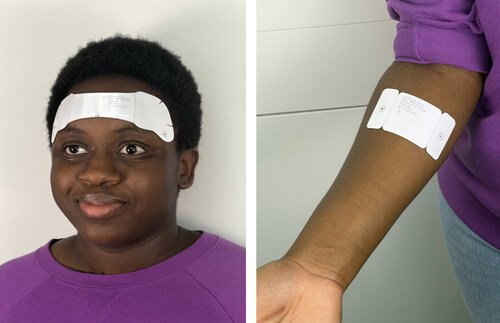
Imagine going to the pharmacy and getting an adhesive bandage that applies gentle energy to accelerate wound healing, reduce infection or enhance skin complexion. Or sticking a patch on your forehead to control a migraine, depression or other brain disorders. Or getting your next vaccine booster not through a needle, but from a sticker. These may soon be a reality, thanks to cutting-edge research at The City College of New York led by the Grove School of Engineering's Marom Bikson, Mohamad Fallahrad, and Dean Alexander Couzis.
Entitled "Wearable Disposable Electrotherapy," the CCNY team's work appears in the journal Nature Communications. "It's a novel platform for medicine. Single-use millimeter-thick adhesive patches, delivering a specific therapy. Applications include skin healing, applying energy to treat brain disorders, and delivering drugs through the skin," said Bikson, who leads the Neural Engineering Group in the Grove School.
The disposable single-use devices, which is as discreet as adhesive bandages, is activated simply by placement on the body. The device senses the body and, over a few minutes or an hour, delivers a single therapy dose. The device can then be removed and thrown away. Bikson commented "We call is wearable medicine."
What makes Wearable Disposable Electrotherapy a technological breakthrough is that each patch is a thin electronic device able to deliver a therapeutic dose, but there are no packaged batteries or electrical components. "Since each patch is single use and disposable, we needed environmentally benign materials - so, no electronics," said Couzis. "Wearable Disposable Electrotherapy is the first electronics-free device that can sense and change the body. It took multiple innovations in chemical, electrical, and biomedical engineering to achieve this."